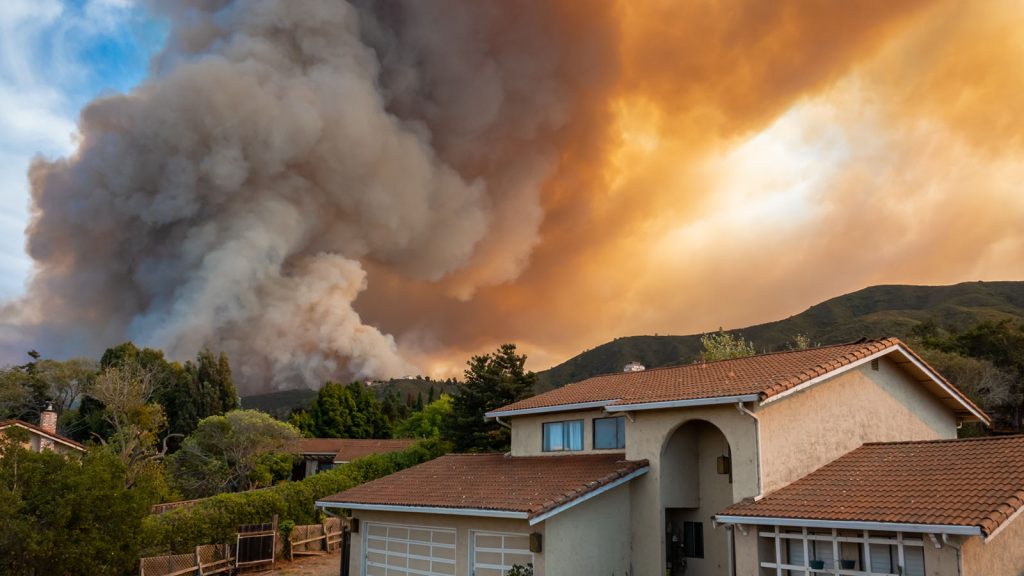You’ve probably heard it a million times: California, the Golden State, the land of dreams, sunshine, and endless possibilities. It’s the place where you can surf in the morning, ski in the afternoon, and catch a star-studded movie premiere by night.
But is it really all it’s cracked up to be anymore?
Let’s face it, the allure of California has started to fade. With skyrocketing living costs, constant wildfires, traffic nightmares, and a housing crisis that makes finding a decent place to live feel like winning the lottery, many are starting to wonder if the California dream is worth chasing.
So, let’s dive into why living in California might not be the paradise it once was.
Housing Costs Are Hefty

The cost of housing has become ridiculously expensive in the Golden State. According to California’s Legislative Analyst’s Office, the typical monthly home payment is over $5,500!
Skyrocketing rents and astronomical home prices make it challenging for even well-established professionals to afford suitable accommodation. The housing crisis is a perennial problem, leaving many Californians grappling with the choice between steep rent or a mortgage that feels more like a financial burden than an investment.
Traffic Is Horrible

California’s traffic can be quite a nightmare, especially in major metropolitan areas like Los Angeles, San Francisco, and San Diego. If you’re driving in LA, you might find yourself stuck in bumper-to-bumper traffic on freeways like the 405 or the 101, sometimes for hours. Rush hour can stretch well beyond the typical morning and evening peaks, making it feel like there’s never a good time to hit the road.
Both Los Angeles and San Francisco are in the top 10 worst traffic cities list, according to U.S. News and World Report.
With sprawling cities and limited public transportation, daily commutes can become nightmarish ordeals. The constant gridlock wastes time, contributes to stress, and negatively impacts the overall quality of life.
High Taxes

California has one of the highest state income tax rates in the country. California has a progressive income tax system with rates ranging from 1% to 13.3%, the highest in the nation. The base sales tax rate in California is 7.25%, but local taxes can bump it up higher. In some areas, you might end up paying over 10% in sales tax.
The property tax rate in California is relatively moderate at about 0.73% of assessed value, thanks to Proposition 13, which limits how much property tax can increase annually. However, because property values are high, the actual dollar amount can be substantial.
Economic Inequality

Despite expensive social programs and political efforts to equalize income, many parts of California grapple with economic disparities. California is known for having a high cost of living, especially in cities like San Francisco, Los Angeles, and San Diego. Housing costs, in particular, are through the roof. This makes it hard for many people to afford basic necessities.
While there are plenty of wealthy individuals and booming tech industries, there’s also a large number of people struggling to get by. This creates a stark contrast between the rich and the poor. Healthcare access is another big issue. Wealthier people can afford the best medical care, while those with lower incomes might struggle to pay for insurance and medical bills, leading to worse health outcomes overall.
Costly Education

California may be home to prestigious universities, but like many U.S. cities, the cost of education is a significant drawback.
If you’re looking at public universities, like the University of California (UC) and California State University (CSU) systems, in-state tuition is relatively cheaper than for out-of-state students, but it’s still not what you’d call cheap. For example, the annual tuition for UC schools can be over $13,000 for in-state students, and much higher for out-of-state students.
Community colleges in California are more affordable, with tuition fees around $1,500 per year for in-state students. However, these costs can add up when you consider living expenses, books, supplies, and other fees. Living in California can be expensive, especially in big cities like Los Angeles, San Francisco, and San Diego, where rent and other living costs are high.
Natural Disasters

California is no stranger to earthquakes, wildfires, and droughts. While the state’s beauty is undeniable, the constant threat of natural disasters can be a source of stress and financial strain for residents.
Water Worries

Water scarcity is a recurring issue in California. The state experiences droughts that impact everything from agriculture to daily life. Water restrictions and shortages can make living in California challenging.
Homelessness Epidemic

California wrestles with a severe homelessness problem. High living costs contribute to increasing numbers of people living on the streets, creating a visible crisis that affects not only those directly involved but also the overall ambiance of many cities.
High Crime (And Misdemeanors)

Certain areas of California have experienced a surge in crime rates. While not all parts of the state are equally affected, rising crime can contribute to insecurity among residents.
Business Is Expensive

While California is a hub for major corporations, the business landscape can be challenging for small enterprises. High taxes, stringent regulations, and a competitive market can make it tough for entrepreneurs to thrive.
Healthcare Is Pricey

Access to quality healthcare is crucial, but the high cost of medical services in California can significantly burden residents, especially those without comprehensive insurance coverage. The problem stems from the availability of affordable healthcare tied to a traditional job.
Everything Is High Stakes

The California dream often comes with a hefty price tag in terms of relentless competition. The pressure to succeed in the job market or academia can lead to stress and burnout for many Californians.
Environmental Struggles

Despite the state’s commitment to environmental conservation, California faces numerous environmental challenges. From air quality issues to threats to biodiversity, residents often grapple with the impact of these concerns on their daily lives.
Limited Public Transportation

While California is making strides in public transportation (California already has the BART subway system), many areas remain car-dependent. This contributes to traffic issues and places an additional financial burden on residents who must own and maintain a vehicle.
Quality of Life Compromised

California’s quality of life has been getting a lot of attention, and not always for the best reasons. Ranging from a high cost of living, homelessness throughout the state, traffic, high taxes and wildfires, it can be difficult to maintain a good quality of life in the state for many people.
While California has beautiful weather, diverse culture, and a lot of opportunities, these challenges make it hard for many people to feel like they have a good quality of life there.



